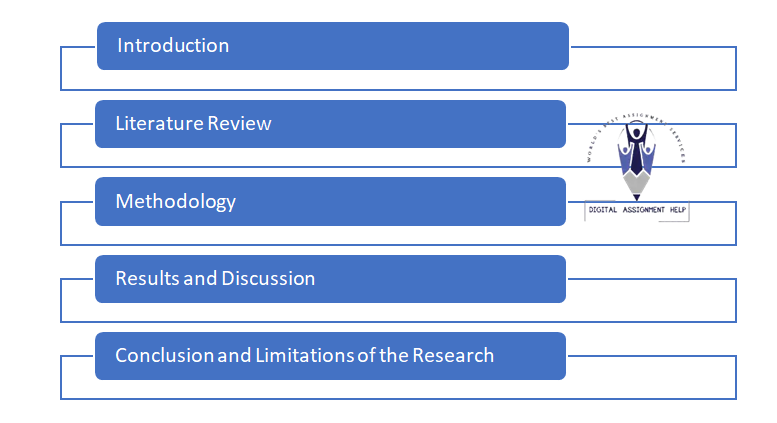COMPETITIVE STRATEGY OF UK RETAIL COMPANIES IN THE PANDEMIC: A CASE STUDY OF ASDA
1.1 Background
The UK retail sector is one of the largest business industries around the globe. The sector is the largest private sector employer in the United Kingdom. According to data, one in 10 individuals in the nation works in the retail sector (The Telegraph, 2019). The sector has evolved to a great extent in the past few decades and is still undergoing several transformations due to different environmental changes. Recently, the globe witnessed the coronavirus outbreak which affected almost every business and service sector. The pandemic was followed by a global lockdown which negatively impacted the business operations of retailers. ASDA is a large retailer in the UK and the company claims that 98% of UK households are served by asda.com (ASDA, 2022). ASDA maintains a strong position in the …
1.2 Problem Statement
The recent coronavirus outbreak has changed the entire landscape of the UK retail sector as the pandemic promoted the adoption of e-commerce and digital marketing practices. The pandemic led to a nationwide lockdown, which forced retailers to carry out business operations online. As a result, most retailers altered their business practices to meet changing consumer demand, which resulted in the adoption of e-commerce business models. Online retailers like Amazon fueled the level of competition in the UK which made the UK retail market more competitive. ASDA mainly relies on traditional retailing practices and, therefore, …
1.3 Rationale
The UK retail industry is widely known for its vastness and immense competition. According to 2022 data, the aggregate value of retail sales in Great Britain reached an all-time high of around 495.71 billion BP. The UK retail industry has been constantly growing in past decades and the industry has recorded an elevated growth after the COVID-19 pandemic in 2020. Total retail sales value in 2020 was 436.74 billion BP which surged rapidly, in 2021, the industry recorded a total sales value of 464.16 billion BP, and in 2022, the amount increased to 495.71 billion BP (Statista, 2022c). Various factors contributed to a rapid rise in sales volume in the retail industry such as increased consumer demand, ease of shopping through e-commerce practices, and economic rebound. These figures indicate the vastness of the UK retail industry. The industry’s vastness is the outcome of…
The pandemic forced retailers to make several alterations in their business practices to adapt to the changing business environment. As a result, different retailers followed different strategies to address high levels of competition. Hence, this research sheds light on the competitive strategy of retail companies during the pandemic through the case study of ASDA. Researchers will gather data to study what competitive strategies were adopted by retailers to curb high levels of competition in the market. In addition, studying the impacts of competitive strategies is equally important to gain a better understanding of the research topic.
1.4 Research Aim and Objectives
Aim
This study aims to evaluate the competitive strategy of UK retail companies during the pandemic through the case study of ASDA.
Objectives
- To evaluate the influential factors that help in making competitive strategy in the retail industry
- To identify the challenges in terms of competition faced by ASDA during the pandemic
- To determine the ways for implementing competitive strategies in ASDA
- To evaluate both positive and negative impacts of current competitive strategies on the business performance of ASDA
1.5 Research Questions
- What are the influential factors that help in making competitive strategies in the retail industry?
- What are the challenges in terms of competition faced by ASDA during the pandemic?
- What are the ways for implementing competitive strategies in ASDA?
- What are the positive and negative impacts of current competitive strategies on the business performance of ASDA?
1.6 Dissertation Structure
A dissertation is a long piece of research which is structured into different chapters which allows learners to gain the most out of research. A systematic order is followed in a dissertation. Hence, this dissertation will be divided into five chapters that are described below:
Figure 1.1: Dissertation Structure
(Self-created)
- Chapter 1 (Introduction): In this chapter, research problems are described along with the research aim and objectives that would be met after the completion of the study. A detailed rationale is studied in this chapter.
- Chapter 2 (Literature Review): The research topic is compared to a wider range of literature and certain theories, concepts, and ideas are critically evaluated in relation to the research topic.
- Chapter 3 (Methodology): This chapter defines the research methods selected by researchers in collecting and analysing data. Data sources, their type, and methods of collection are described in detail along with pepper justification for adhering to those techniques. In addition, ethical considerations which are followed by researchers while collecting and analysing are discussed.
- Chapter 4 (Results and Discussion): In this chapter, collected data is represented and analysed to meet the research aim and objectives successfully. The collected data is analyzed in this section.
Chapter 5 (Conclusions and limitations of the research): This is the final chapter which aims to conclude the research findings and represent them for learners to study. Researchers conclude the study in this chapter by stating whether the research aim and objectives have been met or not. In addition, the limitations of the research are stated in this chapter.
READ MORE RELATED BLOGS
Literature Review


